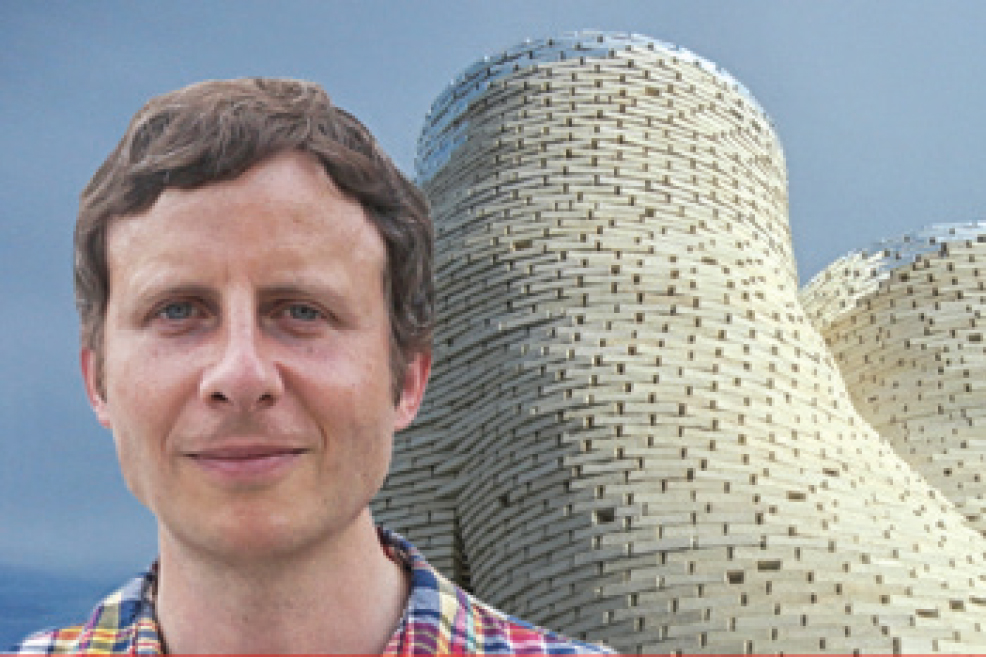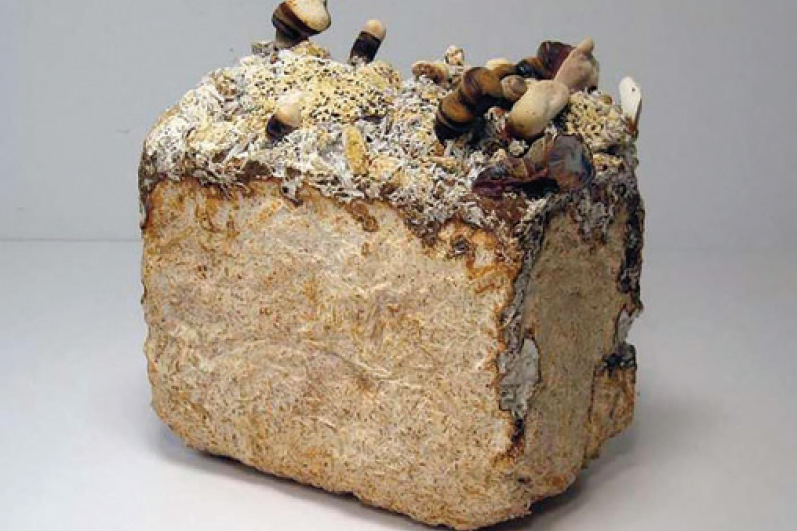Stay Ahead of the Curve by Decarbonizing Your Building

Major opportunities to reduce emissions from buildings are now possible, thanks to science. Beyond the positive spinoffs for global warming, the business opportunities are huge. The materials we use for building are changing for the first time in centuries. Capitalizing on these opportunities will require an alignment of incentives between builders, owners, and tenants — to demonstrate short-term savings and long-term benefits.
Jacob Deva Racusin is studio director and director of building science and sustainability for New Frameworks Natural Building, a Vermont-based contracting and consulting business with an unusual business structure and soaring imagination. His company takes the form of a worker cooperative and is a design/build shop focused on single- and multi-unit residential housing.
“We see a path forward where the building industry can partner with sustainable forestry and regenerative agriculture industries to create plant-based buildings that can store more carbon than they emit, while supporting rural land-based economies and working landscape conservation models,” Racusin says. “We build beautiful, affordable homes using plant-based materials that store carbon rather than materials with a significant carbon footprint.”

When we fail to invest in our infrastructure, we pay the price. Poor roads and airports mean travel times increase. An aging electric grid and inadequate water distribution make utilities unreliable. Problems such as these translate into higher costs for businesses to manufacture and distribute goods and provide services. These higher costs, in turn, get passed along to workers and families. According to the American Society of Civil Engineers’ latest report card, over the next 20 years, the average American household will lose $3,300 each year due to underinvestment in our infrastructure.
Katie Ross leads sustainability for Microsoft’s real estate portfolio and is responsible for developing and implementing sustainability strategies for its offices worldwide. Her career has been dedicated to adopting high-performance, healthy, sustainable buildings, though at an entirely different scale compared to Jacob’s company.
A current Microsoft project is a multi-billion-dollar refresh of the company’s main campus in Redmond, Washington, replacing 12 older office buildings with approximately 3 million square feet of office space with 17 new low-carbon buildings. And part of Ross’s job is helping the company radically reduce the upfront or embodied carbon emissions associated with building materials and construction.
“We’ve been focusing on embodied carbon in our Campus Modernization project from the start,” says Ross. “In 2017, we set embodied carbon reduction targets and have leveraged the Carbon Leadership Forum’s Embodied Carbon in Construction (EC3) tool throughout design and construction to enable data-driven decisions. Currently, we are on track to exceed our reduction targets through carbon-smart building material selections.”
Ross and Racusin are contributors to a broad global movement of building industry companies and professionals with an extraordinary shared vision articulated by Kate Simonen, founder and executive director of the Carbon Leadership Forum (CLF) at the University of Washington.
Simonen believes buildings can be a global solution to climate change. She cites research suggesting that through 2060, her industry will build the equivalent square footage of New York City every 30 days for the next 40 years — potentially a significant carbon threat without changes to current practices. The project shows the path to dramatically reduce carbon emissions and even to store large amounts of carbon permanently in new buildings.

“These upfront carbon emissions connected to building materials are significant. They represent almost half the carbon footprint of new buildings between now and 2050, matching the energy required to run them during that critical time frame,” says Simonen. “But we’re confident we can turn that challenge into a huge plus. By innovating to lower the emissions associated with materials such as steel and concrete; by adopting new design principles that take the entire lifespan and impact of a building into account; and by using plant-based materials like sustainable wood, algae, bamboo, and straw, we can store billions of tons of carbon in the built environments to reduce atmospheric carbon while supporting more vibrant and healthy communities.”
CLF members include architects, engineers, contractors, material suppliers, educators, building owners, policymakers, and associations. Members representing hundreds of companies collaborate through an online forum, regional hubs, action teams, and focus groups.
Ryan Zizzo is a Toronto-based engineer and CEO with a long history of engagement with CLF. His company, Mantle314, is helping the construction industry and policymakers understand, quantify, reduce, and offset the carbon associated with the built environment. “We shine a light on climate-related risks and opportunities and advance business strategies to thrive,” says Zizzo.
“We help building owners and policymakers stay ahead of the climate curve, which is upending and disrupting industries. Our interdisciplinary team of engineers, lawyers, and financial professionals help our clients anticipate climate-related trends and adjust their businesses appropriately,” he explains. His team helps establish new climate-smart policies for public and private sectors. Clients range from property developers to the government of Canada.
“The building industry can partner with sustainable forestry and regenerative agriculture industries to create plant-based buildings that can store more carbon than they emit.”
Meghan Lewis, an architect who until recently led WeWork’s efforts to source sustainable materials for the company’s growing portfolio of over 400 communities in 100 cities across the globe, now spearheads CLF’s Embodied Carbon Policy Toolkit, an array of resources to support the crafting of policies to radically reduce embodied carbon.
“Policy is an essential step toward creating the scale of action required to rapidly reduce embodied carbon in construction,” says Lewis. “Business leaders and government policy makers are working hand in hand to reduce these emissions, with tools like procurement policies, climate action plans, building codes, and city zoning or land use requirements and incentives.”
“Our mission is transformation,” says Kate Simonen. “Our most valuable assets are our imaginations, our networks, our relationships, and collaborations. Working together, we can accelerate and magnify our impact. As friends, allies, and partners, we can transform our world.”




Responses